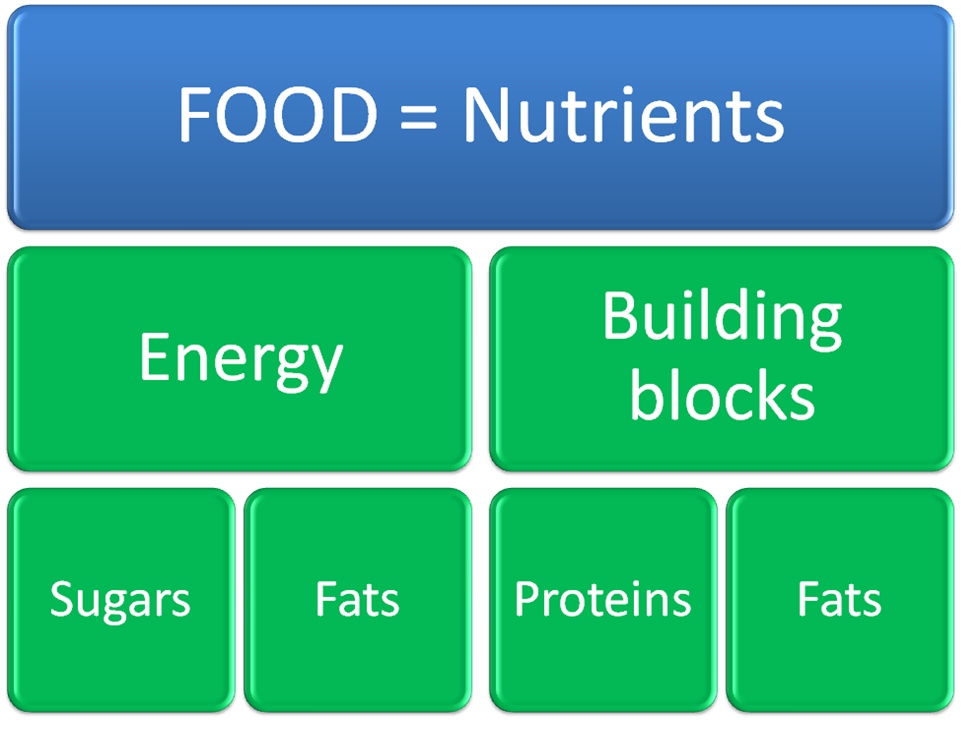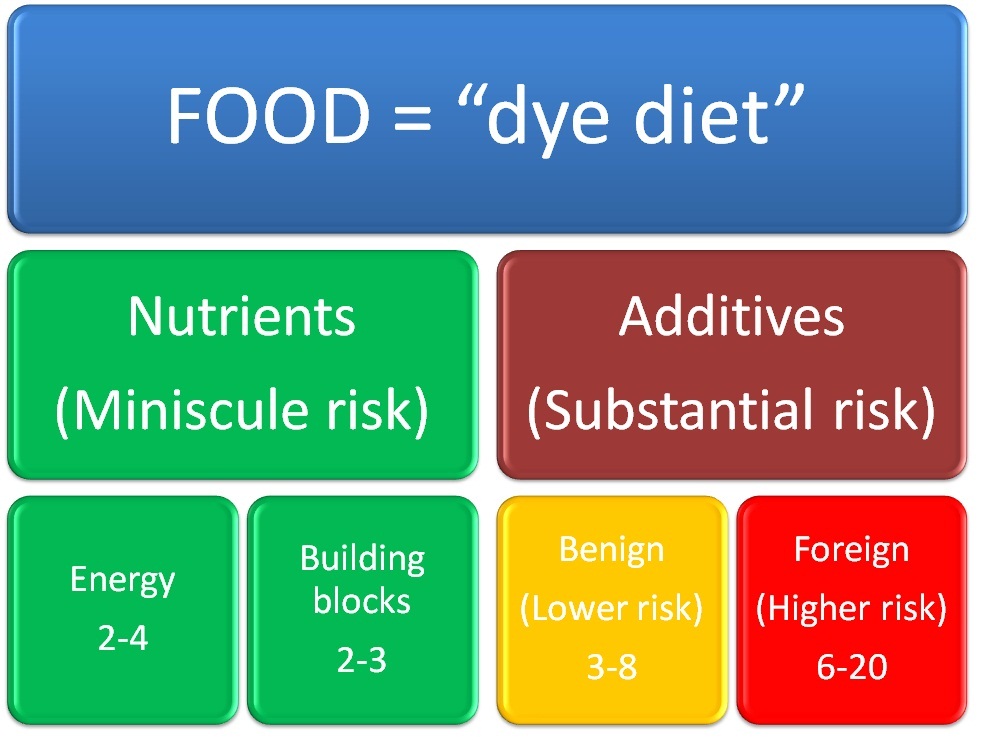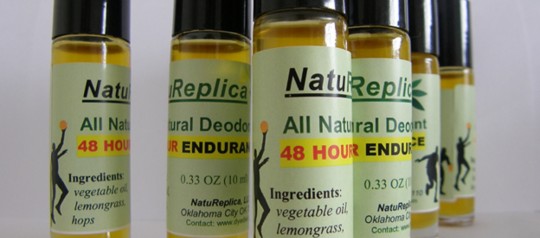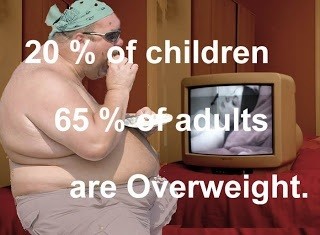About Dye Diet
Welcome to the Dye Diet concept!
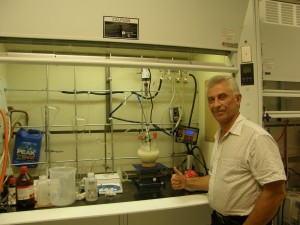 Hello people, I am Nick. This website is NOT about taking advantage of you in any way. This is about offering you true information about food, food additives and food nutrients. They all are more or less complex chemicals useful or useless for support of the vital bio-chemical processes that determine our growth, life and well-being. No wonder that chemical nature of every food additive cannot be ignored: Chemicals we consume strongly affect the chemistry of our body that we commonly call health. Furthermore, now you can try free Dye Diet Calculator to see Health Risk and Nutritional Value of any processed food in terms of the Dye Diet approach presented below. Also, you can see hidden GMO threats indicated by flashing warning signs.
Hello people, I am Nick. This website is NOT about taking advantage of you in any way. This is about offering you true information about food, food additives and food nutrients. They all are more or less complex chemicals useful or useless for support of the vital bio-chemical processes that determine our growth, life and well-being. No wonder that chemical nature of every food additive cannot be ignored: Chemicals we consume strongly affect the chemistry of our body that we commonly call health. Furthermore, now you can try free Dye Diet Calculator to see Health Risk and Nutritional Value of any processed food in terms of the Dye Diet approach presented below. Also, you can see hidden GMO threats indicated by flashing warning signs.
Some people like chemistry but many don’t and that’s OK. I decided to become a chemist when I studied the basics of chemistry at 7th grade. This led me yo building a home my lab in a shed where I was experimenting with more than 200 chemicals by my 10th grade. I would earn my PhD in Organic Chemistry from Tomsk State University in 1978 and taught for a number of years as an Associate Professor at Tomsk Polytechnic University. Later, I conducted research for Dartmouth College, Uniroyal Chemical (later Chemtura Corp.), Bayer AG, Monsanto and Flexsys. Currently I enjoy my activity as an R&D specialist in the US pharmaceutical industry.
Several years ago I was quite shocked, as a professional organic chemist, to find out that so very many foods in the United States are stuffed with a variety of potentially health damaging azo-dyes and other needless chemicals that have no place and no useful function in human body. Over time my concerns for the public health in America only grew bigger. Finally I decided to start doing something real by creating an educational resource for anyone who wants to know about the health risks posed by the “dye diet.” A brief description of what the DyeDiet project is about is given below.
The “Dye Diet“
According to the Wikipedia definition: Food “usually consists of plant or animal origin, that contains essential nutrients, such as carbohydrates, fats, proteins, vitamins, or minerals, and is ingested and assimilated by an organism to produce energy, stimulate growth, and maintain life.” Exactly so!
Do you see any dyes or other food additives listed? No, because they have NOTHING to do with food by definition. However in the real world we often have to deal with food surrogates that pose intrinsic health risks NOT because of overeating but simply because they are made of myriads of chemical additives which are harmful even if eaten in moderation on a regular basis (chronic intoxication). The ubiquitous artificial food dyes are one bright (literally!) example. I call this the “dye diet,” not a real food:
The Dye Diet Risk Factor explanation
The Dye Diet Risk Factor (DDRF) assignment is a scale of 1 to 20 based on available information on the potential hazard for every food ingredient. Nothing we eat has DDRF less than 1. Why? Simply because risk is never equals zero. You can kill yourself by drinking a gallon of pure water over short period of time due to Water Intoxication resulting from hyponatremia. That’s what happened during water-drinking contests. So, minimal possible DDRF = 1 is assigned to pure water. Other low DDRF numbers come with essential nutrients:
- WATER: DDRF = 1
- ENERGY: Fats and sugars, DDRF 2 – 4. Of course, excessive fats and sugars can be dangerous but not in moderation
- BUILDING BLOCKS: Proteins and fats, DDRF 2 – 3.
Again, note that anything can be turned against you if overly consumed. There are NO exceptions! Too much of vitamins is toxic and even more so is sugar. Of course, it is much easier to be intoxicated by non-nutritious additives. In the Dye Diet approach they are subdivided into two categories:
- BENIGN, DDRF 3 – 8 which can be of use in the body (citric acid, soy lecithin, mono- and diglycerides, monosodium glutamate (MSG), etc.) and
- FOREIGN, DDRF 6 – 20 which can be disruptive for human biochemistry (dyes, mineral oil, sucralose, BVO, acesulfame K, etc.).
Based on the risk factors of ingredients the Dye Diet Calculator calculates nutritional quality of food. It is a free tool which translates ingredient lists to Health Risk and Nutrition values to help YOU making better decisions about what is good and what is bad for you in your diet.
The Dye Diet response
- NO FOREIGN ADDITIVES. It does NOT matter how low toxicity (high LD50 numbers) has been demonstrated for any foreign additives because they are consumed regularly for long years thus potentially leading to chronic health problems. The human body has no use for added mineral oils and acids, artificial colors, flavors, sweeteners, preservatives, emulsifiers, etc., so they should not present in our food ever! (While some sugar substitutes may be a kind of temporary relief for diabetic people, the general public is hardly to benefit from them in any way).
- LIMITED BENIGN ADDITIVES. This is when thorough toxicity studies are important and do matter. While naturally occurred food additives are of very low concern, a diet overly loaded with them still may hurt. This becomes even more important for synthetic benign additives like aspartame. The toxicology data are often controversial; too much uncertainty is involved so it is difficult for a consumer to see what the true side effects can be. In this situation I believe that less is better – follow Precautionary Principle whenever in doubt!
- WE ARE RESPONSIBLE. The sad truth is that we do not have much control of what additives and how much they put in our food. I do not remember food industry’s survey which asked: “Do you want Red 40 azo-dye in your body?” But Red 40 is the #1 food colorant in the United States. Who voted for it? Not me. Did you? We know the answer. Still, the good news is that we have control over what we eat. Fortunately, not all food is stuffed with foreign additives; far less than that! Therefore, if we do not want foreign additives in our body WE have to be carefully selective when shopping for groceries. Not the Government, not the FDA and not the USDA but WE are responsible of what toxic things WE eat. By choosing certain kind of food we are encouraging the manufacturer to make more of it!
The Dye Diet mission
It is important for everyone to know the facts. Knowledge helps us to make the right decisions for ourselves and our families. So we seek the truth about anything that is important to us. The truth empowers us for making informed life-saving decisions. When it comes to food it is hard to overstate the importance of knowing what is in our food. Here are a few problems:
- With so many chemical ingredients in our food it is difficult to realize what risk one takes with any given food or beverage;
- The design of so many labels is, at the very least, misleading. Out attention is often attracted by beautiful pictures of fruits on packages but the inside stuff contains little or none of them. This misleads millions of consumers to believe that nutritional value is higher than it really is;
- Most of us read labels already to control caloric or fat intake and those are easy to figure out. Nasty chemicals in processed food are not so easy to identify as they are usually hidden under too technical names, buried in long lists and tiny text makes it difficult to read without magnifying glass.
The mission of this site is to provide consumers with information that will help to simplify the following:
- Understand and estimate the Health Risks and Nutrition Values of any processed food;
- Categorize processed food accordingly and decide buy or not to buy;
- Avoid dangerous food chemicals and Genetically Modified Organisms (GMO) and ingredients;
- Make an informed free choice about any processed food.
If WE start making responsible healthy choices the Food Industry will have to react. The opportunity to reject and eliminate the “dye diet” from our food is in our hands.
+++++++++++++++++++++++++++++++++++++++++++++++++++++++++++++++
Please see the first Food Risk Assessment, Estimate Risk and Nutrition of Any Processed Food, American Nutritional Choices, and Most Risky Food in America for more detail.
+++++++++++++++++++++++++++++++++++++++++++++++++++++++++++++++

